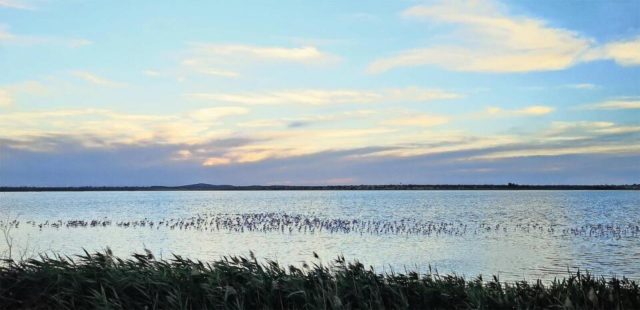MEC requests multi-disciplinary team of scientists and veterinarians to investigate the cause of waterbird mortalities at Kamfers Dam
THE NORTHERN Cape Department of Agriculture, Environmental Affairs, Land Reform and Rural Development has called for an evaluation of the impact of sewage at Kamfers Dam after high levels of iron and zinc were found in the water, which could be contributing to the death of waterbirds.
The MEC for Agriculture, Environmental Affairs, Land Reform and Rural Development, Mase Manopole, requested a multi-disciplinary team of scientists and veterinarians to investigate the cause of waterbird mortalities at Kamfers Dam.
Department spokesperson Zandisile Luphahla said that laboratory results of tissue samples that were collected confirmed that avian botulism was not the cause of the mortalities, since no traces of clostridium bacteria were found.
“It is believed that the mortalities are linked to the high concentrations of metals, such as iron and zinc. Environmental mineral levels and interactions are complicated concepts that depend on a number of factors, however, the high iron levels are regarded as a cause of concern,” said Luphahla.
He stated that iron was known for binding copper and selenium, which in turn could be starving the waterbirds of these minerals.
“These minerals are vital for a healthy immune system so, when these minerals are deficient, animals may become immuno-suppressed and more susceptible to secondary infections.
“The report further suggested that an in-depth evaluation of the entire water system, including the impact of raw and partially-treated sewage from the Homevale wastewater treatment works, be conducted by an environmental toxicologist to determine the significance and effects of the high iron levels.”
Luphahla said the investigation was of particular significance as Kamfers Dam is one of eleven important bird and biodiversity areas (IBAs) in the Northern Cape.
“In addition, supporting probably the largest permanent population of lesser flamingos in southern Africa, as well as at least 63 waterbird species.
“The MEC is encouraging all stakeholders and members of the public having an interest in Kamfers Dam to continue collaborative monitoring efforts and conservation initiatives to improve the status of this IBA.”








